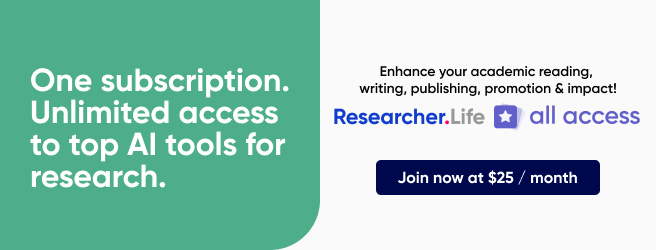Predicting trends: An introduction to time-series forecasting in biomedical research

Predicting trends is an important part of biomedical research. Whether you’re studying disease patterns, patient outcomes, or lab experiments, understanding and predicting trends over time can help you make valuable recommendations to guide patient care or health policy. Here’s where time-series forecasting comes in.
Time-series forecasting is like predicting the future, but with data from the past. It’s all about understanding how something changes over time, so you can make informed decisions.
Time Series Data
Think of time series data as a sequence of observations collected at equally spaced time intervals. In biomedical research, this could be daily patient records, hourly test results, or even monthly disease incidence rates.
Patterns and Trends
Time-series data often reveals patterns and trends. These could be regular, like daily fluctuations in a patient’s vital signs, or irregular, such as spikes in pediatric hospitalization rates during flu season.
Forecasting Models
To make predictions, we use forecasting models. These are mathematical tools that analyze past data to estimate future values. The choice of model depends on your data and what you’re trying to predict.
Popular Time-Series Forecasting Methods
Time-series forecasting employs various statistical methods to predict future values based on historical data. Let’s explore some common methods, along with their advantages and disadvantages:
Moving Averages
Moving averages are a way to smooth out noisy data by calculating an average of nearby values.
Advantages:
- Simplicity: Moving averages are easy to understand and implement.
- Smoothing: They help in reducing noise and highlighting trends in data.
- Good for stable trends: Effective for forecasting data with constant or slowly changing patterns.
Disadvantages:
- Lagging: Moving averages can lag behind abrupt changes or sudden trends.
- Limited accuracy: Not suitable for data with complex patterns or irregular seasonality.
- Equal weight: Treats all past observations equally, which may not be ideal for all datasets.
Exponential Smoothing
Exponential smoothing is a method that gives more importance to recent data while forecasting. It helps predict future values by averaging previous observations, with more weight on newer ones.
Advantages:
- Adaptability: Responds quickly to changing data patterns by giving more weight to recent observations.
- Simplicity: Relatively easy to implement and understand.
- Suitable for low noise: Works well when data has minimal random fluctuations.
Disadvantages:
- Limited memory: Exponential smoothing may not capture long-term trends effectively.
- Sensitivity to initial values: The forecasting can be influenced by the initial values chosen.
- Unsuitable for complex data: Struggles with data that has multiple seasonality patterns or abrupt changes.
Autoregressive Integrated Moving Average (ARIMA)
Autoregressive Integrated Moving Average (ARIMA) is a forecasting method that considers past values, differences between them to make data stationary, and uses moving averages. It’s like learning from the past, making data behave consistently, and then using averages to make predictions.
Advantages:
- Versatility: ARIMA models can handle a wide range of data patterns, including trends, seasonality, and irregularities.
- Data transformation: Can be applied to non-stationary data by differencing.
- Robustness: Performs well with noisy data and can adapt to changing patterns.
Disadvantages:
- Model selection: Choosing the right ARIMA model requires expertise and may involve trial and error.
- Computationally intensive: Training ARIMA models can be time-consuming for large datasets.
- Lack of interpretability: ARIMA models are not as intuitive to understand as simpler methods.
Prophet
Prophet is a user-friendly forecasting tool that automatically detects patterns and seasonality in data, making it easier to predict future trends. It’s like having a helpful assistant for forecasting that doesn’t require deep statistical knowledge.
Advantages:
- User-friendly: Prophet is designed for non-statisticians and is relatively easy to use.
- Handling missing data: It can handle missing data points and outliers effectively.
- Seasonality detection: Automatically detects and accounts for multiple seasonal patterns.
Disadvantages:
- Limited flexibility: May not perform well with highly irregular or rapidly changing data.
- Less control: Users have less control over model parameters compared to other methods.
- Not suitable for all data: May not be the best choice for extremely long-term forecasts or data with complex patterns.
Machine Learning Models (e.g., LSTM, GRU)
Machine learning models for time-series forecasting use algorithms to learn patterns and relationships in historical data. They analyze past observations to make predictions about future values. These models can capture complex patterns and adapt to changing data.
Advantages:
- Adaptability: Deep learning models like Long Short-Term Memory (LSTM) and Gated Recurrent Unit (GRU) can capture complex patterns and long-term dependencies.
- Accuracy: Can provide high accuracy when trained with large amounts of data.
- Feature engineering: Can incorporate additional features for improved forecasting.
Disadvantages:
- Complexity: Deep learning models require substantial computational resources and expertise.
- Data hunger: They perform best with large datasets, which may not always be available.
- Overfitting: Deep learning models can overfit if not properly regularized or tuned.
Conclusion
Choosing the right method for time-series analysis depends on your specific dataset and forecasting goals. It’s often a good practice to start with simpler methods like moving averages or exponential smoothing and then explore more complex models like ARIMA or machine learning as needed. Experimentation and validation are key to finding the most suitable approach for your time-series forecasting tasks.
Make reliable predictions from your data, with the help of an experienced biostatistician. Check out Editage’s Statistical Analysis & Review Services.
Comments
You're looking to give wings to your academic career and publication journey. We like that!
Why don't we give you complete access! Create a free account and get unlimited access to all resources & a vibrant researcher community.

Subscribe to Conducting Research













